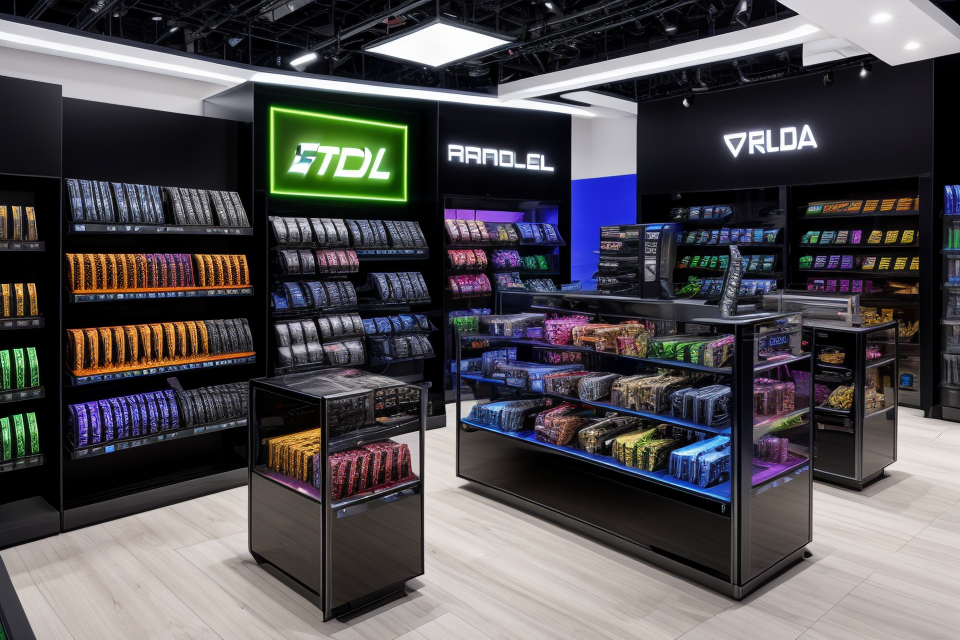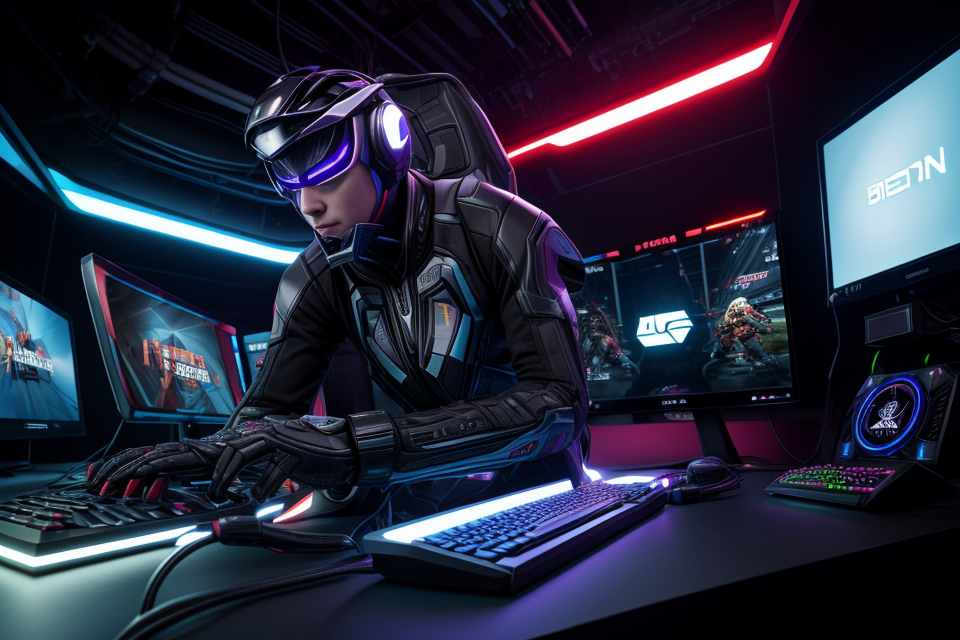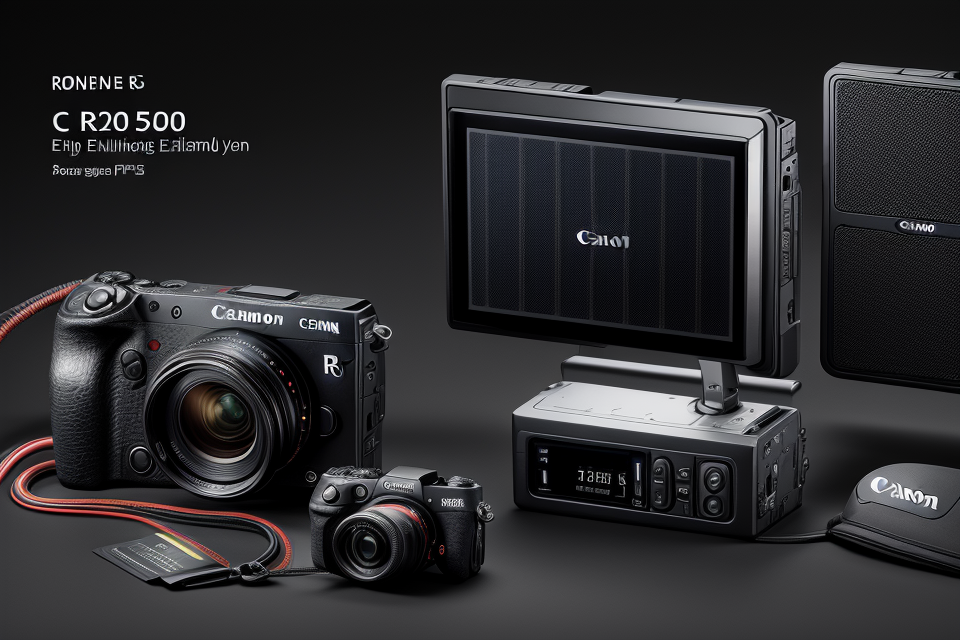
Are you looking to upgrade your graphics card but don’t know where to start? An entry-level graphics card is a great option for those who want to improve their gaming experience without breaking the bank. But with so many options available, which one should you choose? In this article, we’ll explore the different entry-level graphics cards on the market and help you find the one that’s right for your budget. So, let’s dive in and discover the world of entry-level graphics cards!
Choosing the right entry-level graphics card for your budget depends on your specific needs and requirements. If you are looking for a budget-friendly option, the Nvidia GeForce GTX 1660 Super is a great choice. It offers excellent performance for 1080p gaming and can handle most modern games at high settings. Another option to consider is the AMD Radeon RX 580, which also offers great performance for 1080p gaming and is slightly cheaper than the GTX 1660 Super. Ultimately, it’s important to consider your budget, the types of games you want to play, and your overall gaming needs when choosing an entry-level graphics card.
Factors to Consider When Choosing an Entry-Level Graphics Card
Budget
When it comes to choosing an entry-level graphics card, budget is a crucial factor to consider. Determining your budget will help you narrow down your options and find a graphics card that fits your financial constraints. However, it’s important to keep in mind that the cost of a graphics card is not the only expense to consider when building a PC. The cost of other components such as the CPU and RAM should also be taken into account when setting your budget.
One way to determine your budget is to consider your overall PC build budget. This includes the cost of the graphics card, CPU, RAM, motherboard, storage, and other components. It’s important to have a realistic budget in mind, as building a PC can quickly become expensive.
Another factor to consider when determining your budget is the intended use of your PC. If you plan to use your PC for gaming, you may want to allocate a larger portion of your budget towards the graphics card. However, if you plan to use your PC for other purposes such as work or productivity, a lower-end graphics card may suffice.
Once you have determined your budget, it’s important to research and compare different graphics cards within that budget range. Look for reviews and benchmarks to determine which graphics cards offer the best performance for their price. It’s also important to consider the long-term durability and reliability of the graphics card, as well as the manufacturer’s warranty and customer support.
In summary, budget is a crucial factor to consider when choosing an entry-level graphics card. Determine your overall PC build budget, consider the intended use of your PC, and research and compare different graphics cards within your budget range to find the best option for your needs.
Performance
When it comes to choosing an entry-level graphics card, performance is undoubtedly one of the most important factors to consider. After all, you want to make sure that the graphics card you choose can handle the tasks you need it to perform. Here are some things to keep in mind when looking at performance:
- Look for a graphics card that meets your performance needs: This means taking a close look at the specifications of the graphics card and comparing them to the tasks you need it to perform. For example, if you’re looking to play the latest games, you’ll want to make sure that the graphics card has enough memory and processing power to handle the demands of the game.
- Consider the intended use of the computer: This includes things like gaming, video editing, or other graphics-intensive tasks. If you’re using your computer for multiple tasks, you’ll want to make sure that the graphics card can handle all of them.
- Research and compare different graphics cards: It’s important to do your research and compare different graphics cards to find the one that best meets your needs. This can include looking at benchmarks, reading reviews, and comparing prices.
- Keep in mind that price is not always indicative of performance: While a higher price may indicate better performance, it’s important to remember that performance can also depend on other factors such as the processor and memory. It’s important to look at the big picture when considering performance.
In conclusion, when considering performance, it’s important to take a close look at the specifications of the graphics card, consider the intended use of the computer, research and compare different graphics cards, and keep in mind that price is not always indicative of performance. By doing so, you can find an entry-level graphics card that meets your needs and budget.
Compatibility
When choosing an entry-level graphics card, it is important to consider compatibility with your computer’s case and power supply. Here are some steps to ensure that your graphics card will work properly with your computer:
- Measure the dimensions of your computer’s case to make sure that the graphics card will fit. Some graphics cards can be quite large, so make sure that your case has enough space to accommodate it.
- Check the power supply of your computer to ensure that it can handle the demands of the graphics card. Some graphics cards require more power than others, so make sure that your power supply is up to the task.
- Check for any specific requirements or limitations of your motherboard. Some motherboards may have specific slots or connectors that are required for certain graphics cards to work properly. Make sure that your motherboard can support the graphics card you are considering.
By considering these factors, you can ensure that your entry-level graphics card will be compatible with your computer and provide the best possible performance.
Popular Entry-Level Graphics Cards
NVIDIA GeForce GTX 1660 Super
A Great Option for 1080p Gaming
The NVIDIA GeForce GTX 1660 Super is a highly regarded entry-level graphics card that offers exceptional performance for gaming enthusiasts on a budget. Its impressive specifications and affordable price make it a popular choice for those looking to upgrade their gaming experience without breaking the bank.
Offers Good Performance at an Affordable Price
One of the key benefits of the NVIDIA GeForce GTX 1660 Super is its excellent performance at an affordable price. This graphics card offers impressive frame rates and smooth gameplay in a wide range of popular games, including first-person shooters, sports games, and role-playing games.
In addition, the GTX 1660 Super features a streamlined design that makes it easy to install and use, even for those who are new to building or upgrading their gaming PC. Its compact size and low power consumption also make it a great option for those who are looking to build a small form factor or SFF PC.
Requires a 300W Power Supply
It’s important to note that the NVIDIA GeForce GTX 1660 Super requires a minimum power supply of 300W to operate properly. This means that if you’re planning to install this graphics card, you’ll need to ensure that your power supply is up to the task.
In conclusion, the NVIDIA GeForce GTX 1660 Super is a fantastic entry-level graphics card that offers great performance at an affordable price. Whether you’re a seasoned gamer or just starting out, this graphics card is definitely worth considering if you’re looking to upgrade your gaming experience without breaking the bank.
AMD Radeon RX 580
- Offers solid performance for 1080p gaming: The AMD Radeon RX 580 is a popular choice for gamers who want to play games at 1080p resolution. It provides smooth frame rates for most games, making it a great option for entry-level gaming.
- Good for video editing and other GPU-intensive tasks: The RX 580 also offers good performance for video editing and other GPU-intensive tasks. It can handle tasks such as rendering and encoding with ease, making it a good option for content creators on a budget.
- Requires a 400W power supply: It’s important to note that the RX 580 requires a 400W power supply, so make sure your PSU meets this requirement before purchasing.
Overall, the AMD Radeon RX 580 is a great entry-level graphics card that offers good performance for both gaming and GPU-intensive tasks. Its affordable price and good performance make it a popular choice for those on a budget.
NVIDIA GeForce GTX 1650 Super
The NVIDIA GeForce GTX 1650 Super is a popular choice for entry-level gaming due to its affordability and decent performance. This graphics card is capable of delivering smooth 720p gaming experiences and is an excellent option for those who are looking to upgrade their current graphics card or build a new gaming PC on a budget.
Decent Performance for 720p Gaming
The NVIDIA GeForce GTX 1650 Super is designed to deliver smooth gameplay at 720p resolution. It is capable of handling a wide range of games, including popular titles such as Fortnite, League of Legends, and Minecraft. While it may not be able to handle the latest and most demanding games at high settings, it is more than capable of delivering a good gaming experience at 720p.
Affordable Option for Entry-Level Gaming
One of the most attractive features of the NVIDIA GeForce GTX 1650 Super is its affordability. It is priced significantly lower than higher-end graphics cards, making it an excellent option for those who are on a budget. This graphics card is an excellent choice for those who are looking to upgrade their current graphics card or build a new gaming PC without breaking the bank.
It is important to note that the NVIDIA GeForce GTX 1650 Super requires a 300W power supply. This means that if you are upgrading your current graphics card, you will need to ensure that your power supply is capable of delivering enough power to support the new graphics card. Additionally, if you are building a new gaming PC, you will need to ensure that your power supply is capable of delivering at least 300W of power.
Overall, the NVIDIA GeForce GTX 1650 Super is an excellent choice for those who are looking for an affordable entry-level graphics card that can deliver decent performance for 720p gaming. Its affordability and decent performance make it an excellent option for those who are on a budget and looking to upgrade their current graphics card or build a new gaming PC.
AMD Radeon RX 570
- A good option for entry-level gaming and other GPU-intensive tasks: The AMD Radeon RX 570 is a popular choice for those looking to get into gaming or those who need a graphics card for other GPU-intensive tasks such as video editing or graphic design.
- Offers decent performance for 1080p gaming: With its powerful graphics processing capabilities, the RX 570 is capable of delivering smooth gameplay at 1080p resolution, making it a great option for gamers who are looking to upgrade from integrated graphics or an older graphics card.
- Requires a 400W power supply: It’s important to note that the RX 570 requires a minimum 400W power supply to operate, so make sure your PSU meets this requirement before purchasing.
Overall, the AMD Radeon RX 570 is a solid choice for those on a budget who are looking for a graphics card that can handle entry-level gaming and other GPU-intensive tasks. Its decent performance and affordable price make it a popular option among budget-conscious gamers and enthusiasts.
FAQs
1. What is an entry-level graphics card?
An entry-level graphics card is a graphics processing unit (GPU) that is designed for basic gaming and general-purpose computing. It is typically less powerful than high-end graphics cards but can still handle basic gaming and multimedia tasks.
2. What are the main factors to consider when choosing an entry-level graphics card?
When choosing an entry-level graphics card, you should consider the following factors:
* Price: Entry-level graphics cards are typically more affordable than high-end models, so you should set a budget and look for a card that fits within it.
* Performance: Consider the type of games and applications you will be using, and choose a card that can handle them. Look for a card with at least 2GB of memory and a core clock speed of at least 1000MHz.
* Compatibility: Make sure the card is compatible with your motherboard and power supply unit (PSU). Check the specifications of your system to ensure that the card will fit and work properly.
3. What are some popular entry-level graphics cards?
Some popular entry-level graphics cards include:
* NVIDIA GeForce GTX 1660 Super
* AMD Radeon RX 580
* NVIDIA GeForce GTX 1650 Super
* AMD Radeon RX 570
* NVIDIA GeForce GTX 1660
4. How do I install an entry-level graphics card?
Installing an entry-level graphics card typically involves the following steps:
1. Shut down your computer and unplug it from the power source.
2. Open the case of your computer and locate the PCIe slot where you will be installing the card.
3. Remove the protective cover from the PCIe slot and carefully insert the card.
4. Connect the card to the power supply unit (PSU) using the included cables.
5. Close the case and plug the computer back in.
6. Install the graphics card driver on your computer.
5. Can I use an entry-level graphics card for gaming?
Yes, an entry-level graphics card can be used for gaming, but the performance will depend on the specific card and the games you are playing. Look for a card with at least 2GB of memory and a core clock speed of at least 1000MHz for decent gaming performance.


